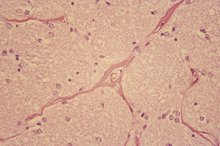Why Is My Spleen Calcified?
As part of the disease-fighting lymphatic system, the spleen is an important, but not vital, organ 1. Abnormal calcifications are often seen in the spleen, particularly in the elderly.
If you are experiencing serious medical symptoms, seek emergency treatment immediately.
Definition
In the context of disease, calcification is defined as the abnormal deposition of calcium salts in a tissue, along with some iron, magnesium and other mineral salts 1.
Types
Spleen Pain After Eating
Learn More
Two types of pathologic (abnormal) calcifications can affect the spleen. "Dystrophic calcification" refers to mineral deposition in dying tissues, in spite of normal blood calcium levels. "Metastatic calcification" describes the deposition of calcium salts in normal tissues, usually in the presence of high blood calcium levels.
Spleen Features
Located just under the left side of the rib cage, the spleen is a spongy, fist-sized organ. It is covered with a fibrous capsule and is comprised of a white pulp and a red pulp.
Spleen Function
Vitamin B-12 Deficiency and the Spleen
Learn More
The white pulp of the spleen helps the body fight infections by producing white blood cells called lymphocytes, The main role of the red pulp is to filter the blood to remove unwanted substances.
Infectious Causes
• Histoplasmosis, caused by the soil fungus Histoplasma Capsulatum • Brucellosis, caused by bacteria of the genus Brucella • Tuberculosis (TB), caused by Mycobacterium tuberculosis • Candidiasis (yeast infection) in immunocompromised patients • Pneumocystis infection, especially Pneumocystis carinii • Parasitic cystscause:
- • Histoplasmosis
- caused by the soil fungus Histoplasma Capsulatum • Brucellosis
- caused by bacteria of the genus Brucella • Tuberculosis (TB)
- caused by Mycobacterium tuberculosis • Candidiasis (yeast infection) in immunocompromised patients • Pneumocystis infection
- especially Pneumocystis carinii • Parasitic cysts
Other Causes
Calcification may occur in the parenchyma, or essential tissue, of the spleen. Possible causes include:
• Phleboliths (stony deposits in veins) • Hemangioma (benign blood vessel tumor) • Splenic lymphoma (lymph tissue cancer) • Hematoma (mass of clotted blood in tissue or organ)
Diffuse uniform calcification can result from impaired blood flow to the spleen and tissue death (splenic infarction). This usually happens in sickle cell patients.
Related Articles
References
- "Robbins and Cotran's Pathological Basis of Disease" (7e Ed.); Vinay Kumar, M.D., et al.; Elsevier; 2004
- Learning Radiology
Writer Bio
Suzanne Fantar has been writing online since 2009 as an outlet for her passion for fitness, nutrition and health. She enjoys researching and writing about health, but also takes interest in family issues, poetry, music, Christ, nature and learning. She holds a bachelor's degree in biological sciences from Goucher College and a MBA in healthcare management from the University of Baltimore.







